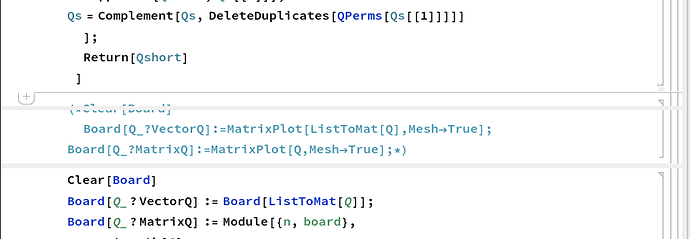I'm new to Mate but not Linux. I'm using 20.10 on an AMD FX(tm)-8120 with a GeForce GTX 1070 Ti NVIDA card.
The only non-open source software that I use is Mathematica (12.2), which I use extensively. The issue is that I get unwanted horizontal lines just below the cell that I'm working on which sometimes interfere with what I'm doing. This doesn't happen with standard Ubuntu. Below is a shortlist of installs that have worked and ones that gave me the issue:
Kubuntu (20.04): Mathematica issues with unwanted horizontal lines
Gnome desktop installed on my Kubuntu: Mathematica worked but I had all kinds of other KDE/Gnome issues
Ubuntu Mate(20.10): Mathematica issues with unwanted horizontal lines
I would really like to stay with Ubuntu Mate but I have to solve the Mathematica issue.
Can anyone point me to what to look for in the differences in the display manages between Gnome 3 and (Kubuntu and Ubuntu Mate)? What are some things that I can try? I'm stuck because I do not even know what question I should be asking.
Hi and welcome to the Ubuntu MATE community.
Would you mind sharing a screenshot of what you call "unwanted horizontal lines" ? Are these graphical glitches ?
Do you use Nvidia proprietary drivers or Nouveau open source drivers ?
Have you tried another window manager in MATE Tweak ? (Marco - no compositor)
Have you tried installing other window managers like Compton or Compiz (you can select them in MATE Tweak once installed) ?
Here are the unwanted lines:
The only place I'm having issues is with Mathematica. The other common programs that I use are, emacs, Mate terminal, google chrome, and firefox.
I'm using the Nvidia proprietary drivers. The intent for the graphics card is for ML work.
From your suggestion I have tried:
Marco (Compton GPU compositor)
Compiz (Advanced GPU accelerated desktop effects)
Marco (Adaptive compositor)
Marco (No compositor)
each with and without the Mathematica option -mesa and all still have the same issue.
(But Compiz with Advanced GPU accelerated desktop effects looks like fun)
From the Mathematica web-site:
"Mathematica 12.2 has been fully tested on the Linux distributions listed above. On new Linux distributions, additional compatibility libraries may need to be installed. It is likely that Mathematica will run successfully on other distributions based on the Linux kernel 2.6 or later.
Mathematica supports an X Window System front end, and uses the Qt application framework for its user interface—the same used by the major Linux desktop environment KDE. Regular tests are run on both enterprise and popular open-source Linux distributions."
Thanks for the precisions.
Doesn't look like it's been heavily tested with MATE Desktop. 
Have you tried the Mathematica forums ?
1 Like
I have not tried the forums yet but I did contact Wolfram's customer support. They were of not much help because Mate (and at the time KDE) fell outside of what they officially support. This is one of those issues that exist on the borders of every group's support. Thanks for your insights.
I would look in Software & Updates, the Additional Drivers tab and un-tick your NVIDIA driver, click on Apply Changes, reboot and see if your issues are the same using no proprietary drivers. It's worth a shot.
Good luck Brad_Paul.
1 Like
Also for the record, one difference between stock Ubuntu (with GNOME) and Ubuntu MATE is that the latter still uses X11 out of necessity, whereas the former uses the GNOME Wayland compositor known as Mutter. The proprietary NVIDIA drivers (like @mdooley said, you may actually have them installed) work with Wayland very differently from how they work with X; see https://wiki.gnome.org/Initiatives/Wayland/NVIDIA for the gory details. As such, there really is no comparison between stock Ubuntu's GNOME and Ubuntu MATE, at least in this sense.
My suggestion? Follow @mdooley's advice above; then when you're done with that, go to your Ubuntu system and get to the login screen. When you get there, find the "gear" icon (usually in the bottom right corner), click it, choose "GNOME on Xorg", then log in. Launch Mathematica, then see if the lines appear like in Ubuntu MATE.
2 Likes

